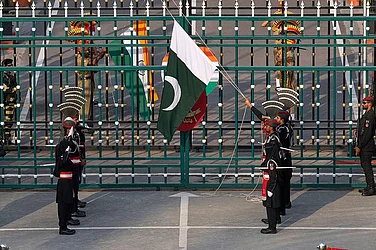
China-India rapprochement after 1998 nuclear tests of India started on a strong and positive note—both the countries hit the track to fast growth. The two Asian giants were already aware of according national priority to economic development, which would demand a re-examination of the nature of China-India ties. They could not afford a deteriorating relationship seeing each other by historic legacy. The beginning of the new century once again saw exchange of state heads’ visits, leading to a number of joint statements stressing on economic cooperation between the two countries. This also exhibited the new spirit and thinking in the context of rapid growth of the two nations.
For a long time, economic issues were never the focus of Sino-India relations. Although Jawaharlal Nehru raised the issue of how the two Asian giants should deal with each other 56 years ago when he discussed the newly founded People’s Republic with his Cabinet, he may not have predicted a simultaneous rising of the two countries as seen today. For nearly half a century since then, both the sides spent too much time on geopolitical elements and security challenges, leaving little space for other issues. That outcome was sad. For instance, by 2002, the bilateral trade had only reached a little over $3 billion. Fortunately, the wisdom of the two leaderships brought an end to this. Bilateral trade touched new heights and it reached $18.6 billion in 2005. This also shows that economically the two countries are complementary.
In a joint declaration issued during Chinese Premier Wen Jiabao’s visit to Delhi in April 2005, the two sides decided to upgrade the bilateral relations to "strategic partnership toward peace and prosperity". This is seen as a significant step for the future of Sino-India relations. Peace means giving up old thinking and confrontational approaches, and prosperity points to mutual benefits and common development.
Now that India and China have registered exceptionally high GDP growth—8.1% of and 9.3%, respectively, in 2005—a new formula seems to be taking shape, that is, a simultaneous rising of the two developing countries. This would help create a new structure of world economy, in addition to the fundamental changes in their respective societies. The flip side is that because of rapid development at nearly the same time, the two countries may not find it easy to correctly perceive the other side’s position at bilateral or global level. Traditional thinking in geo-politics and geo-economics still play a role.
The rise of China and India has drawn the attention of international media, and a comparison of the two has become inevitable. Most reports stress on competition between the two. They portray it as some kind of a race where one’s victory would necessarily lead to other’s failure. It is depicted as a race between a rabbit and turtle. India is often described as a slow but steady economy enjoying more advantages over China and would finally defeat the latter. Though such stories are provocative and stimulating, they do not show much logic. First of all, the two are not in a race. Very few in China would think that their goal is to defeat India or anyone. What it aims for is to meet its own domestic needs and people’s expectation for a better life. And, I assume that is India’s target too. Secondly, the rise of China or India would produce opportunities for the other. Thirdly, though the two nations do have some unresolved problems, few would think that more economic exchanges and cooperation between the two countries would make these problems more difficult to resolve. The reality indicates just the opposite. Last but not least, it is true that the similarity of the two economies naturally leads to competition, but competition can and should be healthy.
When Chinese leader Deng Xiaoping met former Indian Prime Minister Rajiv Gandhi in 1988, he had said: "Unless both China and India rise up, there would be no Asian century." Now, the reality has come up. How can we let our thinking fall behind?
The writer is Director, South Asia Studies,Shanghai Institute for International Studies
















